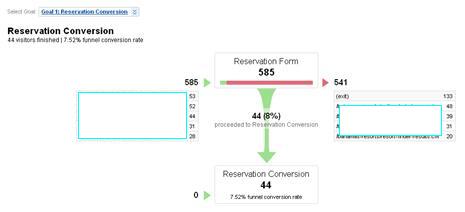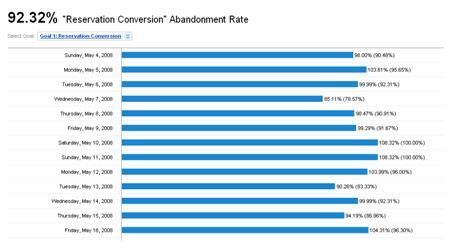Realize a Higher ROI by Creating, Reading and Understanding Goal Funnel Reports

 |
At the core of any successful search marketing campaign is clearly defined goals, and tracking and measuring of these goals. This week have been discussing how to use Google Analytics to enhance your PPC performance and today I’ll explore how goal funnels can help increase conversions and your ROI.
First, in order to utilize goal funnels within Analytics, you’ll need to actually set them up. My PPC Hero cohort, Amber, recently wrote a thorough article on how to set up goal funnels in your account so I will not no re-hash her instructions. However, with time we have discovered a few items that we left out of these instructions. Here are a couple additional notes to consider:
Goal Funnel Match Types: There are three different match types that define how Google Analytics identifies a goal or funnel URL. You need to make sure that you set up your goals so that your track performance correctly. Here the definitions of these three match types:
- Exact match: This option requires that the URLs entered as your funnel and goal URLs exactly match the URLs shown in the reports. For example, there can be no dynamic session identifiers, query parameters. Exact matches can also be regular expressions. When setting your goals, it’s ideal to remove the hostname from your goal URL. For example, if your goal is www.domain.com/1/thanks.html, enter ^/1/thanks.html as your goal. If you are using an exact match for a goal (i.e. https://domain.com/page.html), any trailing spaces will cause the goal to be invalid. If you are using partial matching (i.e. ^/page.html), trailing spaces are not an issue.
- Head Match: If your website has dynamically generated content, use the Head Match filter and leave out the unique values. For example, if the URL for a particular user is https://www.example.com/checkout.cgi?page=1&id=9982251615 but the ‘id’ varies for every other user, enter https://www.example.com/checkout.cgi?page=1 and select Head Match as your Match Type.
- Regular Expression Match: This option uses regular expressions to match your URLs. This is useful when the stem, trailing parameters, or both, can vary between users. For example, if a user could be coming from one of many subdomains, and your URLs use session identifiers, use regular expressions to define the constant element of your URL. For example, page=1 will match https://sports.example.com/checkout.cgi?page=1&id=002 as well as https://fishing.example.com/checkout.cgi?page=1&language=fr&id=119.
File Name vs. URL: When setting your goal URL, it is preferred by Analytics if you use the file name as opposed to the actual URL of your goal (thank you page, etc.). For example, if your goal URL is “https://www.mysite.com/thankyou.html” you enter “/thankyou.html” into the Goal URL field. However, if you are tracking multiple sub-domains, then this option will not work and you’ll need to use the entire URL.
Okay, now that we’ve got that technical jargon out of the way, let’s discuss how goal funnels can enhance your PPC performance.
Funnel visualization: Once you have your goals in place and they tracking your traffic properly, then you can begin to dissect these elements of your site:
- how users arrive at your contact form
- how they interact with your contact form
- how many users don’t complete your form, and where/how did they leave
- how many users completed the form
As you can see from the visualization below, 585 users hit my reservation form and you can see where they came from within the site (I have blocked the actual URL to keep my client anonymous, but there are URLs under those boxes). 541 users abandoned the form (gotta work on that!) and you can see where they went. And 44 users actually filled out the contact (yeah!).

Knowing this data can help you determine where the weak points are in your conversion path. As you can see, this is a one-step conversion path: reservation form and reservation conversion. Where the visualization can be extremely helpful is when you have a longer conversion path, say perhaps 4-5 steps. Then you can really see where you lose your audience, and how you can optimize your site in order to keep people moving toward your end goal.
Abandoned funnels: With this report you can see the total number of users who entered your conversion path, but never made it across the finish line. As you optimize your site and enhance your conversion path, you should see these numbers decrease. If you view this report and these numbers are increasing, something is wrong with your site, and it’s going in the wrong direction.

With your PPC campaign, you need to know why users aren’t converting and where they abandon your conversion path in order to increase your overall performance and your ROI. With conversion funnels, you’re a few steps closer to understanding why users don’t convert, and how you can make your website better.



